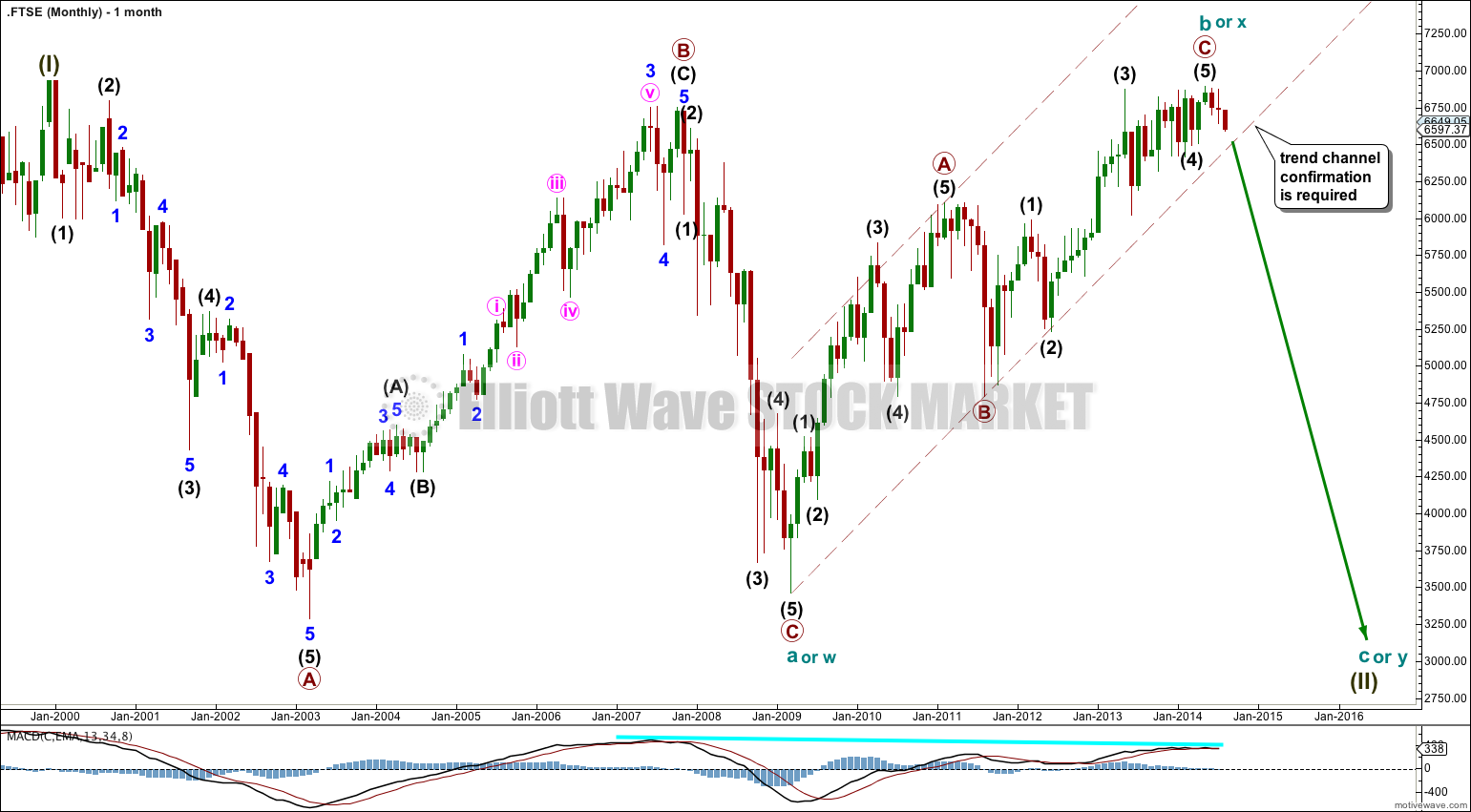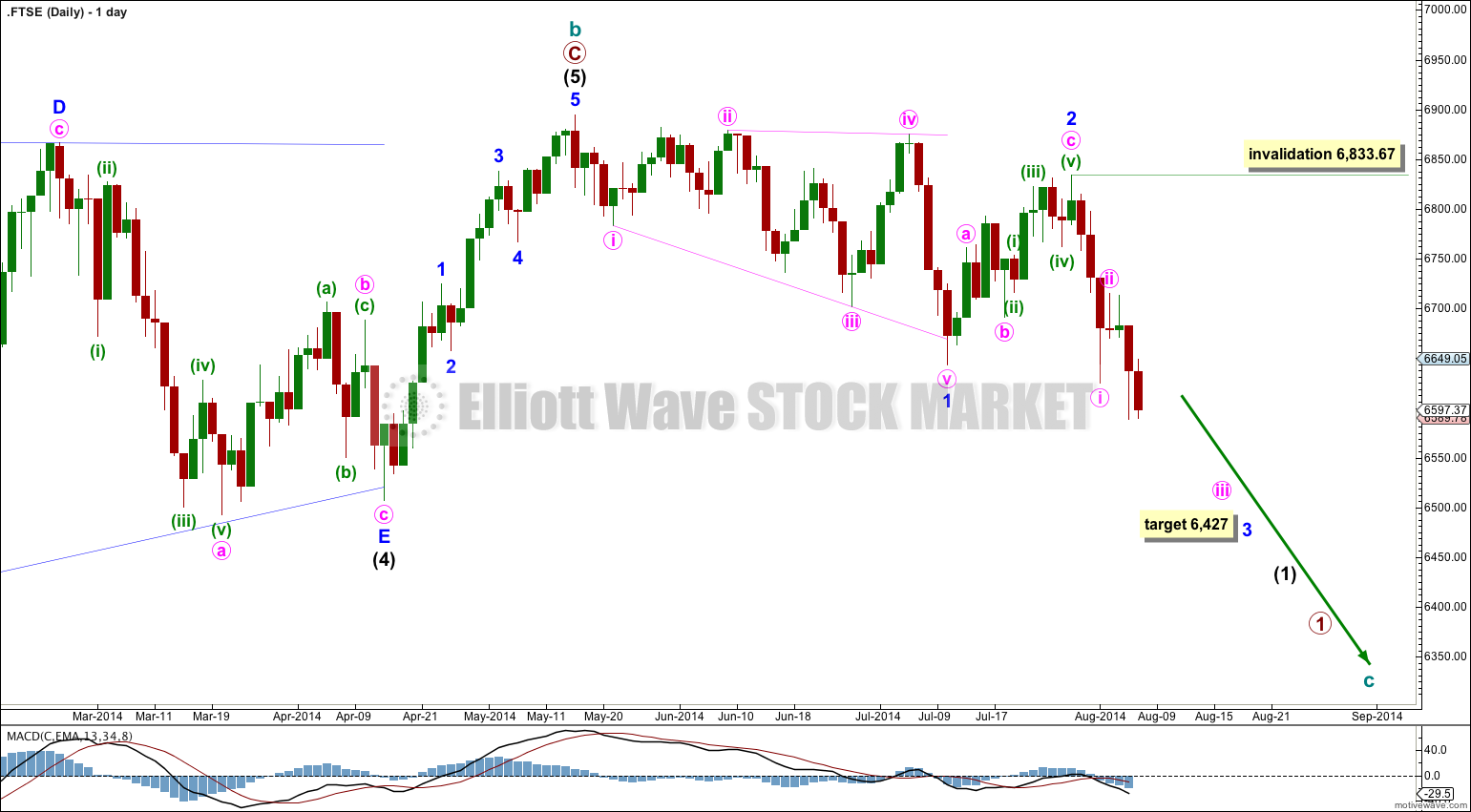Movement below 6,646.62 invalidated the last daily Elliott wave count. I expect FTSE has seen a big trend change, but this is unconfirmed. Only when the channel on the monthly chart is clearly breached will I have confidence in this wave count.
Click on charts to enlarge.
The bigger picture sees FTSE in a huge correction for a super cycle wave (II).
Super cycle wave (II) may be either a regular flat correction (labeled cycle a, b, c) or it may be a double flat or combination (labeled cycle w, x and y).
A regular flat correction would expect a five wave structure downwards for cycle wave c to move at least a little below the end of cycle wave a at 3,460.71 to avoid a truncation. Cycle wave c would be expected to last from one to several years, with a shorter time frame more likely.
A double flat or combination would expect a three wave structure downwards for cycle wave y to end about the same level as cycle wave a at 3,460.71. Cycle wave y would be expected to last from one to several years, with a longer time frame more likely. It could look like a repeat of cycle wave a.
There is divergence at the monthly chart level with MACD which supports this wave count.
Cycle wave b (or x) subdivides as a zigzag and is most likely incomplete. At 7,691 intermediate wave (5) would reach equality with intermediate wave (1).
I have moved the degree of labeling within intermediate wave (5) all up one degree. I expect that this fifth wave was typically very short following the barrier triangle of intermediate wave (4).
So far to the downside there is a leading expanding diagonal for a first wave, followed by a typically deep second wave correction.
I expect that a third wave down at minor degree has begun for FTSE. At 6,427 minor wave 3 would reach 1.618 the length of minor wave 1.
Within minor wave 3 no second wave correction should move beyond the start of its first wave above 6,833.67.
Minor wave 1 lasted 39 days. I would expect minor wave 3 to last about 21 or 34 days in total. So far it has lasted seven days.


